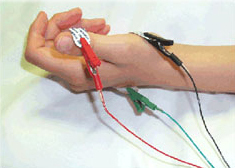

We do need a physician referral prior to scheduling. To schedule an appointment for an EMG at any of our primary offices in the Twin Cities, please contact our central scheduling at (763) 287-2300, and select option 2 or send a referral and our Patient Care Coordinators will call you. Medication is not necessary before, during, or after the test. Please let us know if you have had a mastectomy, take blood thinners or have a pacemaker. We recommend that you wear loose fitting clothing and, if possible, do not wear any jewelry. No special preparation is necessary and you do not need to fast. The results of the nerve conduction study and EMG will be interpreted by one of our neurologists and a report will be sent to your physician or discussed with you at your next neurology appointment. A technician will be with you throughout the procedure. Your diet and activities should not be affected by the test. The entire test can last anywhere from 15 minutes to one hour or more, depending on the number of areas to be tested. The stimulation of the nerve and the prick of the needle will be slightly uncomfortable, but lying still and remaining as relaxed as possible will help. Each muscle to be studied will require the insertion of a needle. The computer records this electrical activity also. Once the needle has been inserted into the muscle, you will be asked to relax and then contract (shorten) the muscle.

The second part of the test involves the insertion of a tiny Teflon-coated needle into specific muscles. The electrical activity will be recorded on a laptop computer connected to the EMG machine. Repeated small, short shocks of varied intensity are administered. Since the level of electricity used during the test is very low (similar to that of static electricity), the test is very safe. A small electrical current is used to stimulate the nerve.

Small, flat discs called electrodes will be taped to the surface of your skin. You will be asked to lie on an exam table, either on your back or stomach, depending on the areas to be tested. If you have symptoms in the shoulder, neck or lower back area, you will likely be asked to wear a gown. The results of this test help your doctor determine the cause of your symptoms and select the best treatment for you. Both parts of the test are usually needed for the physician to obtain meaningful results. The needle examination is useful for identifying problems arising from a “pinched nerve” in the spine, as well as diseases of the muscles themselves. Nerve conduction studies are useful in detecting nerve-related problems, such as nerve entrapment (for example, carpal tunnel syndrome), or more widespread nerve dysfunction. An EMG test generally consists of two parts: nerve conduction studies and a needle examination.

An EMG is a neurodiagnostic test that measures the electrical activity of a muscle during contraction and relaxation.


 0 kommentar(er)
0 kommentar(er)
